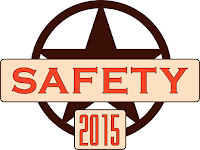OSH professionals often cite topics such as business fundamentals, career management and organizational culture as knowledge they need to advance in the profession. Here's a resource that may help. Jack Welch Management Institute has launched "WelchCast," a free weekly podcast featuring career and business insight from Jack and Suzy Welch, authors of The Real-Life MBA: Your No-BS Guide to Winning the Game, Building a Team and Growing Your Career, and Daily Mail CEO Jon Steinberg. Jack Welch is also the well-known former CEO of General Electric and Suzy Welch is a former editor-in-chief of Harvard Business Review.
“Jack and Suzy are drawing on their own experiences in business to provide direct and candid career advice,” says Steinberg, who adds that the podcast "gets their insights in front of people thinking about their careers and jobs while stuck in cars commuting to and from work."
The first episode covers job-hopping, career growth and learning what it takes to get promoted in your company’s culture. The second episode, “Fear and Fearlessness in Business,” will be released on June 29, with a third episode on how to share candid feedback with your boss, peers and reports expected in early July.
















